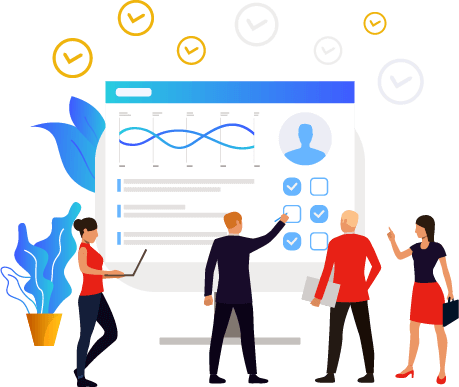In providing competent security solutions, we are proud of the competence of our experienced IT security professionals. We recognize that you need a robust IT protection framework in place for your business environment.
Organizations are reevaluating the current cyber security in order to deliver secure informtions of any digital data. Our Cyber Security services aim at The expansion of innovations like the mobile, cloud, and enormous information are generally affecting assurance techniques. These ever-advancing advances will keep on adding to the entanglements and will drive the commitment of security for your IT framework and data resources. It can likewise danger your endeavor information and the licensed innovation. Accordingly, it is critical to have a solid IT security set up to keep your information, licensed innovation and other most important resources safe and made sure about.
Our Capabilities

Identity and Access Management
In enterprise IT, Identity and Access Management (IAM) is about identifying and controlling individual network users' responsibilities and access privileges and the situations in which such privileges are given (or denied) to users. Customers (customer identity management) or employees (employee identity management) may be such users. One digital identity per person is the central goal of IAM systems.
Managed Cybersecurity Monitoring for SMB’s
We have looked at cyber attacks , especially data breaches and DDoS, as issues for mostly large corporations and businesses until recently. This does make sense on the surface. After all, in terms of money, IP resources and other valuable details, the top corporate players have the most to lose. Large companies (in areas such as cybersecurity consulting) are continuing to raise cybersecurity expenditure. As a result, cyber criminals, i.e. small to medium-sized companies (SMB), are searching for smaller , weaker targets.
Cybersecurity strategies & Policies
A cybersecurity policy sets the code of conduct for operations such as email attachment encryption and social media use restrictions. As cyber attacks and data breaches are potentially expensive, cybersecurity policies are essential.
Security Risk Assessments
Risk evaluation in the company is about knowing, handling, monitoring and mitigating cyber risk. It is a vital part of the risk management policy and data security activities of every enterprise. Risk assessments are nothing new, and if you work in information security, you are in the risk management business, whether you like it or not. When companies rely increasingly on information technology and information systems to do business, threats that did not exist before are exacerbated by the inherent risks involved.
Approach To Cyber security: CIA triad
The most technological and tangible of the three pillars is data and information security. The information we obtain comes from different sources, such as IT, Operational Technology (OT), Personal Data and Operational Data. Every step of the way, it must be properly handled and secured. The CIA triad refers to a model of information security consisting of three key components: confidentiality, integrity and availability. Each element constitutes a fundamental goal of information security, which can be used as guides for defining security policies in an organisation. It can be a challenging challenge to develop and enforce the security policies of the company, but using the three-pillar cyber security strategic approach can help you methodically and comprehensively recognise and manage cyber security threats.
Confidentiality
Secrecy and the use of encryption are often associated with this aspect. In this case, confidentiality means that the data is available only to approved parties. If information has been held confidential, this ensures that other parties have not violated it; confidential data is not released to individuals who do not need it or who do not have access to it.
Ensuring confidentiality ensures that information, as well as the sensitivity of the data, is structured in terms of who wants to have access. A violation of privacy can take place by various means, such as hacking or social engineering, for example.
Common threats against confidentiality are:
- Eavesdropping attacks
- Encryption cracking
- Malicious insiders
- Man-in-the-middle attacks
Integrity
Data integrity refers to the certainty that, before or after submission, the data is not tampered with or degraded. It is certain that the data has not been subjected, either knowingly or inadvertently, to unauthorised alteration.
During the transmission process , there are two points during which integrity could be compromised: during data upload or transmission or during record storage in the database or collection.
Knowledge maintains its value only if it is valid, so it is important to take appropriate measures to prevent the modification of data, whether at rest or in transit, by unauthorized users or processes.
Challenges that could affect the integrity of your information are:
- Compromising a server where end to end encryption isn’t present
- Physical compromise to device
- Human error
Availability
This means that, when appropriate, the information is accessible to approved users. It must have properly operating computer systems, security controls and communication networks for a system to demonstrate availability.
Systems that are classified as essential (power generation, medical equipment, safety systems) also have extreme availability requirements.
Such systems must be resilient to cyber threats and have protection against power outages, hardware failures and other events that may affect the availability of the system.
Safeguarding business continuity relies heavily on rigorously ensuring the efficiency of information storage and processing facilities, software, equipment and communication networks.